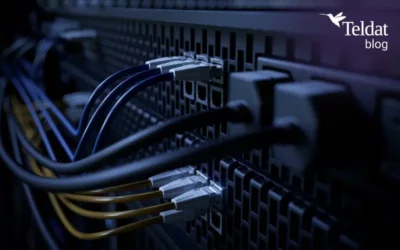
Once this has been achieved, the main stages are:
- Deployment.
- Operation and management.
- The break down or transition of the network to a new project.
The deployment stage is where operations involving startup/installation of devices are carried out; the end result being the contracted service. This project stage is where:
1. The agreed service deadlines and delivery must be met.
2. Tools, simplifying the foreseeable mass configuration tasks, must be available.
3. A team of specialists must oversee the installation of devices, at a previously agreed location.
4. Validation of the entire startup process, so the project site can move onto the operation stage.
This list, although stating the obvious, makes the network deployment stage one of the most intense and problematic parts of a new scheme. It implies the additional costs, not inconsiderable, of contracting external services.
Generally speaking, the service supplier, or carrier, offers their clients an all-inclusive package with the best possible service/price ratio. They are expected to choose device manufacturers who, not only fulfil the technological and economical side, but who also help keep costs down when actually deploying the network.
One of the most vital components for net deployment is a Zero Touch Installation service for participating devices. This means that service startup, on location, must include the following:
- The client must receive a device, on site, with a basic connection guide (similar to the autoinstallation of home services such as ADSL/FTTH). The client can then simply connect his device, following the basic guide, and switch it on.
- The autoconfiguration process initiates: the device downloads its individual settings, from a control center, and subsequently activates them to provide the contracted service.
- From the control center, the state and availability of said services are detected (validating the whole process).
Having autoconfiguration available during deployment and the use of pre-validated templates reduces the costs of installation by optimizing deadlines and minimizing configuration error rates.
Not only are there advantages at this stage – maintenance operations are notably optimized – but an office with an out of service device only needs a new router to be sent in order to resume business. The rest of the configuration, the recovery of stored data, etc., is almost automatically executed through management tools. This facility both optimizes SLAs and avoids penalization.
In short, autoconfiguration, throughout network deployment, becomes a very relevant aspect and should always be included in the manufacturers’ commercial offer. Not only because this represents an enormous improvement in their products, but also because they can then offer tools, through their sales network, to reduce the global cost of the project and increase the perception of quality of service for their clients.
Teldat fully understands this concept and incorporates their software tool, the Colibrí NetManager, to manage networks. This, in addition to other unified tools and together with their WLAN and access routers, provides optimum solutions for schemes, wherever their clients require them.
Please visit our blogs, or our webpage, for further information on our Colibrí NetManager management tool.

























